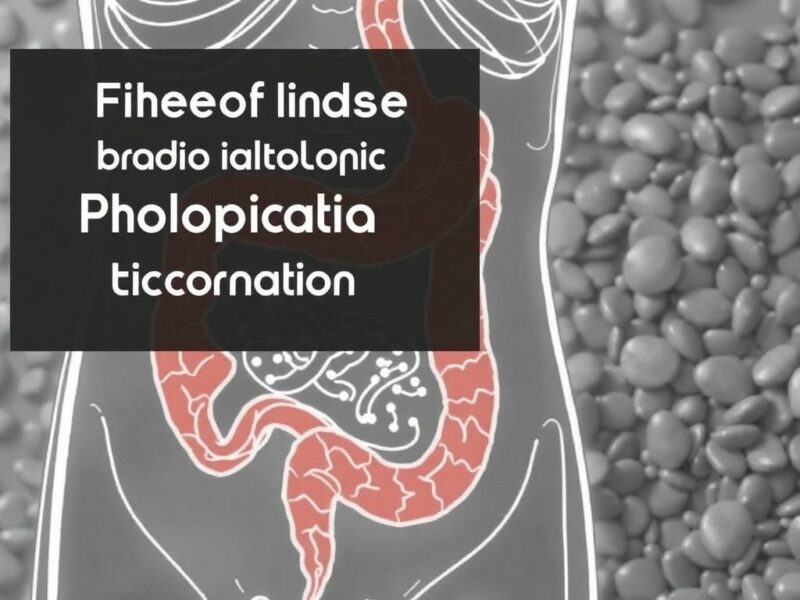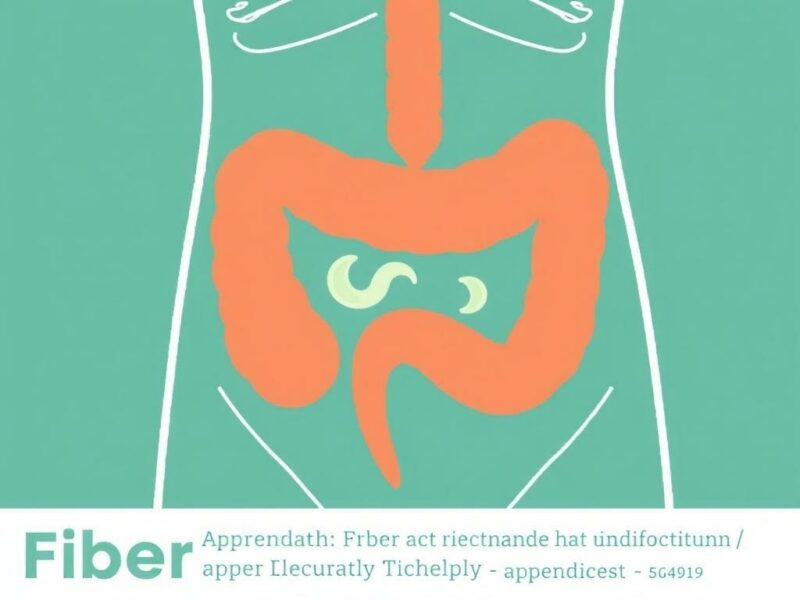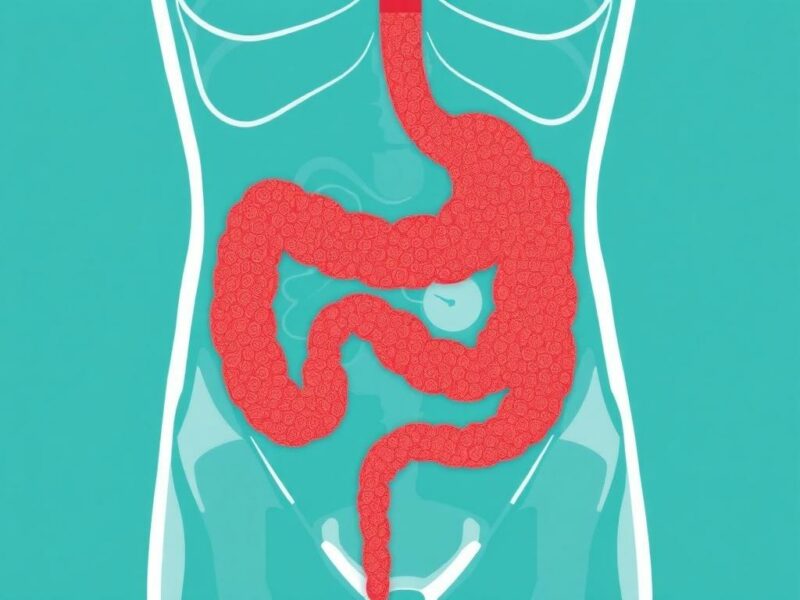Appendicitis, the inflammation of the appendix, is a common health concern that can affect people of all ages. It often strikes suddenly, causing discomfort and sometimes requiring urgent surgery. But what role does diet, especially fiber intake, play in the development or prevention of appendicitis? In this article, we will dive deep into the relationship between fiber consumption and appendicitis, understanding how different types of fiber influence digestive health, and what you can do to reduce your risk.
What is Appendicitis?
Appendicitis occurs when the appendix, a small pouch attached to the large intestine, becomes inflamed. This inflammation is typically caused by an obstruction inside the appendix, such as fecal matter, swelling, or infection. If left untreated, appendicitis can lead to serious complications, including rupture of the appendix and peritonitis, a life-threatening infection of the abdominal cavity.
The symptoms usually start with mild abdominal pain around the navel area, which eventually shifts to the lower right side of the abdomen. Other symptoms can include nausea, vomiting, fever, and loss of appetite. Given its importance, understanding the risk factors, including dietary influences like fiber intake, is crucial.
Understanding Fiber: Soluble and Insoluble
Fiber is an essential part of a healthy diet, primarily known for its benefits in supporting digestion. It is a plant-based carbohydrate that our bodies cannot fully digest, but it plays a vital role in maintaining gut health. There are two main types of fiber—soluble and insoluble—that affect our digestive system in different ways.
- Soluble fiber: This type dissolves in water to form a gel-like substance in the gut. It helps slow digestion, stabilizes blood sugar levels, and lowers cholesterol. Foods high in soluble fiber include oats, apples, citrus fruits, and beans.
- Insoluble fiber: Insoluble fiber does not dissolve in water but adds bulk to stool, helping food pass more quickly through the digestive tract. It is found in whole grains, nuts, seeds, and vegetable skins.
Both types of fiber are important for digestive health, but their different properties mean they contribute uniquely to reducing the risk of digestive disorders, including appendicitis.
How Does Fiber Intake Influence Appendicitis Risk?
There’s a growing body of evidence suggesting that a high fiber diet can play a crucial role in reducing the risk of appendicitis. But how exactly does this work? The connection primarily lies in fiber’s ability to promote healthy bowel movements and prevent blockages within the appendix.
Because appendicitis often starts with a blockage, primarily due to hardened stool or fecaliths, consuming enough fiber can help by softening stool and increasing its bulk. This promotes smoother passage through the colon and reduces the chance of particles getting trapped in the narrow passage leading to the appendix.
Lack of fiber in the diet can lead to constipation, which increases the risk of blockages and inflammation in the appendix. In addition, fiber-rich diets encourage the growth of beneficial gut bacteria, which contribute to overall colon health and help prevent infections that could trigger appendicitis.
The Role of Fiber in Stool Characteristics and Consistency
The consistency and frequency of stool are important factors in maintaining a healthy digestive tract and lowering appendicitis risk. Insoluble fiber adds bulk to stools, making them larger and softer, which in turn helps prevent constipation. Soluble fiber absorbs water and turns into a gel that slows down digestion, ensuring the gut absorbs nutrients effectively and stools are well-formed.
| Type of Fiber | Main Sources | Effects on Digestion | Impact on Appendicitis Risk |
|---|---|---|---|
| Soluble Fiber | Oats, Apples, Citrus Fruits, Beans | Forms gel to slow digestion; stabilizes blood sugar; improves gut bacteria | Prevents infection; maintains healthy gut flora; reduces inflammation |
| Insoluble Fiber | Whole Grains, Nuts, Vegetable Skins | Adds bulk; speeds transit time; prevents constipation | Reduces risk of fecal blockages leading to appendicitis |
Scientific Studies on Fiber Intake and Appendicitis
Multiple studies have explored the link between fiber consumption and appendicitis, with many confirming that diets low in fiber are associated with a higher rate of appendicitis cases. For example, a landmark study conducted in the 1980s observed populations with traditionally high fiber intake experienced far lower incidences of appendicitis compared to Western populations consuming low fiber, high processed food diets.
Recent research further supports this conclusion, emphasizing the importance of long-term fiber consumption in preventing appendiceal obstruction. In particular, communities with diets rich in fruits, vegetables, and whole grains, all excellent fiber sources, report fewer cases of appendicitis. Moreover, increased fiber intake has been shown to reduce inflammation markers in the digestive tract, creating a less hospitable environment for appendicitis to develop.
Key Findings from Research
- Low fiber diets correlate with increased rates of appendicitis.
- Diets rich in fruits, vegetables, and whole grains help maintain healthy bowel movements.
- Consistent fiber intake supports a healthy microbiome, reducing inflammation in the appendix region.
- High fiber intake lowers the formation of fecaliths, common blockages leading to appendicitis.
How Much Fiber Do You Need Daily?

The recommended daily fiber intake varies by age and gender but generally falls between 25 to 38 grams per day for adults. Unfortunately, many people fall short of these recommendations, consuming only half the necessary fiber for optimal digestive health.
Fiber Recommendations by Age and Gender
| Age Group | Recommended Fiber Intake (grams/day) |
|---|---|
| Children (4-8 years) | 25 g |
| Boys (9-13 years) | 31 g |
| Girls (9-13 years) | 26 g |
| Men (14-50 years) | 38 g |
| Women (14-50 years) | 25 g |
| Older Adults (51+ years) | 21-30 g |
Meeting these guidelines through natural foods rather than supplements is generally the best approach, as whole foods provide a balance of fiber types, vitamins, minerals, and other nutrients essential to overall health.
Top Fiber-Rich Foods to Incorporate in Your Diet
If you want to boost your fiber intake and potentially reduce your risk of appendicitis, a variety of fiber-rich foods can help you achieve this goal. Here are some of the best options:
- Legumes: Lentils, chickpeas, black beans, and peas are loaded with both soluble and insoluble fiber.
- Whole Grains: Brown rice, quinoa, barley, oats, and whole wheat products retain vital fiber in their bran and germ layers.
- Fruits: Apples, pears, berries, oranges, and bananas provide excellent soluble fiber content.
- Vegetables: Broccoli, carrots, spinach, sweet potatoes, and Brussels sprouts offer a good mix of fiber types.
- Nuts and Seeds: Almonds, chia seeds, flaxseeds, and walnuts contribute healthy fats and fiber.
Sample High-Fiber Daily Meal Plan
| Meal | Food Items | Approximate Fiber Content |
|---|---|---|
| Breakfast | Oatmeal with chia seeds, apple slices, and a handful of almonds | 10-12 g |
| Lunch | Quinoa salad with black beans, mixed greens, and shredded carrots | 8-10 g |
| Snack | Carrot sticks with hummus | 3-4 g |
| Dinner | Grilled chicken, steamed broccoli, and brown rice | 6-8 g |
Potential Challenges and Tips to Increase Fiber Intake

For some, increasing fiber intake may not come easily, especially if currently eating a highly processed or low-vegetable diet. Jumping suddenly to very high fiber can cause temporary digestive discomfort, including gas, bloating, and abdominal cramps. To avoid this, it’s important to increase fiber gradually over several weeks while also drinking plenty of water to help fiber move smoothly through your digestive system.
- Start by adding one extra serving of fruits or vegetables daily.
- Swap refined grains for whole-grain versions.
- Include legumes in meals a few times per week.
- Snack on nuts, seeds, or fresh fruit instead of processed foods.
- Stay hydrated by drinking water throughout the day.
Are There Any Risks to Excessive Fiber Intake?
While fiber is beneficial, excessive intake beyond recommended amounts, especially without adequate fluid consumption, can lead to constipation or bowel blockage. This, ironically, could increase appendicitis risk rather than reduce it. This is why balance and gradual adjustment are key. For most people, consuming fiber in recommended amounts through a variety of natural foods is safe and highly advantageous.
Additional Lifestyle Factors That Affect Appendicitis Risk
Aside from fiber intake, several lifestyle factors might influence your risk of developing appendicitis. Maintaining a healthy weight, exercising regularly to stimulate gut motility, and avoiding highly processed foods can all help keep your digestive system functioning well. Smoking and high stress levels have also been associated with poorer digestive health, potentially increasing inflammation and related complications.
Summary of Lifestyle Recommendations
- Maintain a balanced diet rich in fiber from whole foods.
- Exercise regularly to promote bowel motility.
- Keep hydrated to aid digestion and fiber function.
- Avoid processed foods high in sugars and unhealthy fats.
- Manage stress levels through relaxation techniques.
When to Seek Medical Attention

Despite preventive measures, appendicitis can occur unexpectedly. If you experience severe abdominal pain, especially in the lower right side, accompanied by nausea, vomiting, and fever, you should seek immediate medical attention. Early diagnosis and treatment are critical for preventing severe complications.
Conclusion
Understanding the relationship between fiber intake and appendicitis offers valuable insights into maintaining digestive health and reducing the risk of this sudden and painful condition. A diet rich in both soluble and insoluble fiber supports smooth bowel movements, prevents blockages in the appendix, reduces inflammation, and fosters a healthy gut environment. By gradually increasing fiber through whole grains, fruits, vegetables, legumes, nuts, and seeds, and pairing this with adequate hydration and a healthy lifestyle, you can take proactive steps toward protecting your appendix and overall digestive system. While fiber is not a guaranteed shield against appendicitis, it is one of the most effective and natural ways to promote gastrointestinal health and potentially lower your risk of appendiceal inflammation. Remember, when symptoms arise, timely medical care is essential. In the journey toward better health, fiber plays a vital supporting role—so start slowly, aim for balance, and enjoy the benefits of a fiber-rich life.



